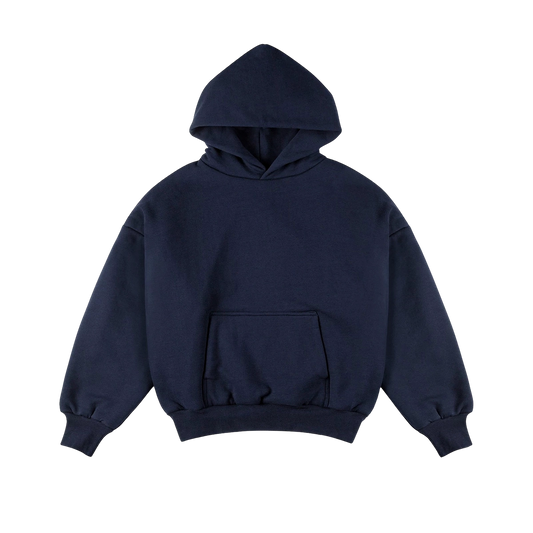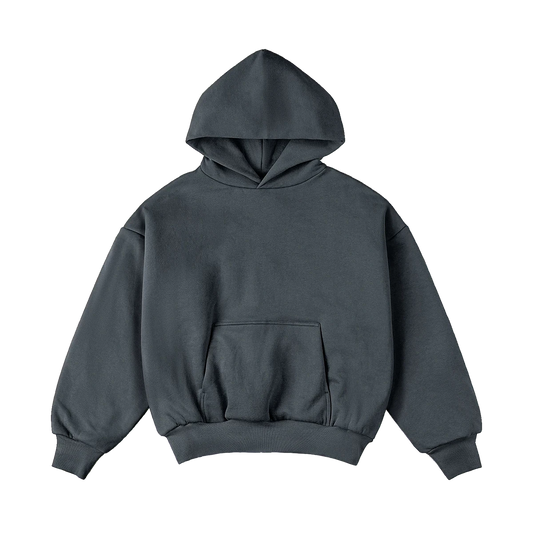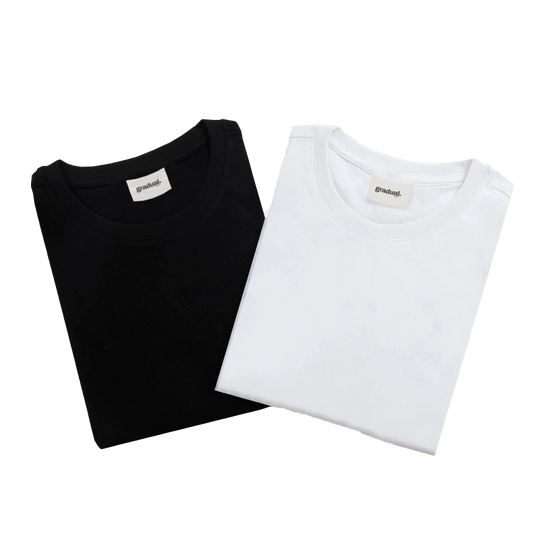
Fast Fashion: Ecological Environmental Impact & Social Costs of Disposable Fashion
Content of this article
- Introduction: The glittering facade of fast fashion
- What do we mean by fast fashion and “disposable fashion”?
- The ecological catastrophe: Fast fashion's war against the environment
- Social injustice: The human price of cheap clothing
- Conclusion: More than just a fashion trend – A global challenge
- Frequently Asked Questions (FAQ) about Fast Fashion
Introduction: The glittering facade of fast fashion
Constantly new collections in stores, trends that change weekly, and prices that tempt you to snap up your clothes immediately – welcome to the world of fast fashion, as described by sources like Fabric of Change and Wikipedia . Major chains like Zara, H&M, SHEIN, and Temu dominate high streets and online shops, promising us cutting-edge styles for less. But behind this enticing facade of seemingly endless choices and affordable deals lies an industry with profound and often devastating impacts on our planet and the people who make our clothes. This article takes a critical look at the ecological and social costs associated with so-called "disposable fashion."
In short: Fast fashion stands for quickly produced, inexpensive fashion that reflects current trends. However, this speed and low cost come at a high price – for our environment and for millions of workers worldwide.
What do we mean by fast fashion and “disposable fashion”?
The term "fast fashion" was first coined in the early 1990s when Zara opened in New York and caused a stir with its business model of taking designs from sketch to store in just 15 days, as Earth.Org reports . Today, this principle has become the norm for many major fashion chains. It's all about copying runway trends and high-fashion looks as quickly as possible and making them suitable for the masses. Reddit users aptly define fast fashion not only by price, but above all by the speed of production and the rapid changes in collections, often several times a week. These "micro-seasons," according to the University of Pennsylvania, create a constant stream of new merchandise and the implicit pressure to always have the latest.
The downside of this acceleration is the often inferior quality of the products. The clothing isn't designed to last. We show how to distinguish these inferior goods from durable alternatives in our ultimate quality guide . They are intended to be replaced by new trends after a short time. This leads directly to the concept of "disposable fashion" – clothing becomes a short-lived consumer good that is quickly purchased, rarely worn, and carelessly discarded. On Reddit , users frequently report items of clothing that lose their shape or fall apart after just a few washes, sometimes comparing them to the quality of Halloween costumes.
The ecological catastrophe: Fast fashion's war against the environment
The impacts of the fast fashion industry on our environment are alarming and diverse. According to The Plastic Collective, it is one of the most resource-intensive and environmentally damaging industries in the world.
 The fast fashion industry leaves a deep ecological footprint through CO2 emissions, water consumption and waste.
The fast fashion industry leaves a deep ecological footprint through CO2 emissions, water consumption and waste.
Thirsty fashion: Enormous water consumption and massive pollution
Textile production is extremely water-intensive. According to Svegea , the production of a single cotton T-shirt alone can require up to 2,700 liters of water—equivalent to what a person drinks in 2.5 years! The fashion industry is responsible for approximately 20% of global industrial wastewater and consumes an estimated 79 billion cubic meters of water annually, according to WasteManaged . Cotton, a key component of many garments, is particularly thirsty and often contributes to water shortages in growing regions.
But it's not just consumption that's problematic. The dyeing and finishing processes for textiles, in particular, are highly polluting. Toxic chemicals, heavy metals, and dye residues often enter rivers and oceans untreated, contaminating drinking water sources and destroying aquatic ecosystems. According to the Carbon Trail, textile dyeing is considered the second-largest water polluter worldwide, right after agriculture.
Climate killer: CO2 emissions from the textile industry
The fast fashion industry is a significant driver of climate change. It is estimated to be responsible for approximately 8-10% of global CO2 emissions – more than international aviation and maritime shipping combined! These enormous emissions arise from energy-intensive production processes, particularly in the manufacture of synthetic fibers such as polyester, which are derived from petroleum. Polyester production requires about twice as much energy as cotton and relies heavily on non-renewable, carbon-intensive resources. Added to this is the energy-intensive transport of raw materials and finished goods through global supply chains.
Did you know? The production of synthetic fibers like polyester, which are used in many inexpensive hoodies and clothing items, has a particularly high carbon footprint and contributes to dependence on fossil fuels.
Mountains of garbage: The global textile waste problem
The fast fashion model promotes a culture of short-termism and leads to gigantic amounts of textile waste. Globally, approximately 92 million tons of textile waste are produced annually. It is estimated that up to 100 billion garments are produced annually, of which, according to Econyl , a significant portion—between 15 and 45 billion—are never sold. At least three out of five of the garments purchased are discarded within a year.
Much of this discarded clothing ends up in landfills or is incinerated—less than 1% is recycled into new clothing. Images of massive piles of clothing in Chile's Atacama Desert, visible even from space, have been frequently cited on Reddit as a symbol of this massive waste and highlight the scale of the crisis. This textile waste often decomposes slowly and can release toxins or emit harmful gases such as carbon dioxide, nitrogen oxides, and sulfur dioxide when burned.
 The throwaway mentality of fast fashion leads to unsustainable mountains of waste worldwide.
The throwaway mentality of fast fashion leads to unsustainable mountains of waste worldwide.
Invisible danger: Microplastics from our clothing
Another serious problem is microplastic pollution. Synthetic fabrics like polyester, nylon, or acrylic, which are found in much of today's fast-fashion clothing, release tiny plastic fibers with every wash. It's estimated that these textile fibers account for around 35% of primary microplastic pollution in the world's oceans. Synthetic fleece materials, popular for cheap and warm hoodies, are particularly known for releasing large amounts of fibers. An alternative are tightly woven , heavyweight cotton hoodies that focus on durability instead of cheap plastic. According to Outside Online, a single fleece garment can release up to 250,000 fibers per wash!
These microplastic particles enter rivers and oceans via wastewater, are ingested by marine organisms, and thus accumulate in the food chain. They are now even detected in our food, drinking water, and air, with consequences for human health that are not yet fully foreseeable, as the Plastic Soup Foundation warns.
Finite resources: The insatiable hunger for raw materials
Fast fashion production consumes vast amounts of natural resources. In addition to the aforementioned water consumption for cotton, vast areas of land are required for its cultivation, often involving the use of pesticides and fertilizers that damage soils and biodiversity. Synthetic fibers require petroleum, a non-renewable resource. The fast fashion industry's ever-growing appetite for consumption is putting massive pressure on our planet's boundaries.
Social injustice: The human price of cheap clothing
The low prices of fast fashion items come at a high human cost. The ethical challenges in the supply chain are immense and affect millions of workers.
 Cheap fashion is often the result of precarious working conditions and human suffering.
Cheap fashion is often the result of precarious working conditions and human suffering.
Modern slavery? Working conditions in factories
To keep production costs as low as possible, manufacturing is usually outsourced to developing countries in South and Southeast Asia, where labor rights are often inadequately protected. Millions of people, predominantly women (approximately 80% of employees), work there under conditions often described as exploitative or even "modern slavery." The European Parliament has also sharply criticized the conditions in many Asian textile factories.
Wages to cry about: The poverty dilemma of textile workers
The wages paid are often barely enough to survive. Amounts of a few cents per hour or daily wages equivalent to 2-3 euros are not uncommon. These starvation wages often force workers to work excessive overtime (14-16 hours a day, 7 days a week) just to cover their basic needs and those of their families. According to a UCLA analysis , the minimum wage in many producing countries is far below a living wage.
"The immense pressure on manufacturers to meet the low prices and quick turnaround times demanded by fast-fashion brands contributes significantly to these deplorable working conditions," according to Earth.Org .
Lost childhood: child and forced labor in the supply chain
Despite international efforts, child labor in the fashion industry, particularly in upstream production stages such as cotton harvesting or informal workshops, remains a serious problem. Cases of forced labor, for example, in certain cotton-growing regions, are also repeatedly documented and critically discussed by Reddit users and the World Resources Institute .
Health and safety at work: often missing
Working conditions in many textile factories are dangerous. Poor building safety, inadequate ventilation, the handling of toxic chemicals without protective measures, and a lack of emergency exits repeatedly lead to serious accidents, injuries, and chronic health problems. The tragic collapse of the Rana Plaza factory in Bangladesh in 2013, which killed over 1,100 people and injured thousands, is a shocking example of the fatal consequences of ignoring safety standards in the pursuit of cheap production. Workers often also have no right to organize into unions to fight for better conditions.
Conclusion: More than just a fashion trend – A global challenge
The facts speak for themselves: Fast fashion, however tempting its prices and constant novelty may seem, is a system rooted in massive ecological exploitation and social injustice. "Disposable fashion" is not only a problem for our environment through resource waste, pollution, and mountains of waste, but also for the millions of people who sew our clothes under degrading conditions.
This is precisely why we founded Gradualbasics. Our philosophy of quality and slow fashion is a direct response to the problems of disposable fashion. It's a complex problem, driven by consumer habits, global economic structures, and the marketing of fashion corporations. But the growing awareness of these grievances, as evident in discussions on platforms like Reddit, is an important first step. A change in thinking is urgently needed – both among consumers and within the industry itself.
The good news: There are alternatives.
The path out of the fast-fashion trap begins with conscious choices. Instead of chasing short-lived trends, we can focus on quality and longevity. Two of our most important guides show you how:
Frequently Asked Questions (FAQ) about Fast Fashion
What exactly is fast fashion?
Fast fashion is a business model in the clothing industry that aims to produce large quantities of clothing that replicates current fashion trends as quickly and cheaply as possible. It is characterized by very short collection cycles (often 'micro-seasons'), low prices, and often inferior quality, which contributes to a throwaway culture ('throwaway fashion').
What are the biggest environmental problems caused by fast fashion?
The biggest environmental problems include immense water consumption (especially for cotton – up to 2,700 liters for one T-shirt), massive water pollution from chemicals and dyes (textile dyeing is the second largest water polluter worldwide), high CO2 emissions (approximately 8-10% of global emissions), the creation of huge amounts of textile waste (approximately 92 million tons annually), and pollution from microplastics from synthetic fibers.
Under what conditions do people work in the fast fashion industry?
Many workers in fast fashion production, often in developing countries, suffer from extremely low wages (sometimes only cents per hour), excessive working hours (14-16 hours a day, 7 days a week), unsafe and hazardous working conditions (e.g., the Rana Plaza collapse), and a lack of protection of their basic rights, such as freedom of association. Child and forced labor are also documented problems.
Why is fast fashion so cheap when the costs are so high?
The low selling prices are possible because the true ecological and social costs (so-called externalities) are not included in the price. These costs are passed on to the environment and society. Production relies on inexpensive materials, mass production in low-wage countries, and the exploitation of labor.
Are all cheap clothing brands automatically fast fashion?
Not necessarily, but it's a strong indicator. The key factors are the business model (rapid collection changes, large quantities), the production conditions, and the quality of the materials. Some low-priced brands can offer more durable basics, while others clearly rely on the fast-fashion model.
List of sources
- Fabric of Change: What is Fast Fashion?
- Wikipedia: Fast fashion
- Reddit: What counts as fast fashion?
- Earth.Org: Fast Fashion and Its Environmental Impact
- Reddit: Defining fast fashion
- UPenn EII: Fast fashion
- Reddit: makes what seems less ethical...
- The Plastic Collective: How Fast Fashion is Bad for the Environment
- Svegea: The Fast Fashion Dilemma: Choosing Quality Over Quantity
- Carbon Trail: Fast Fashion and Its Environmental Impact in 2025
- WasteManaged: Fashion Waste Facts & Statistics
- Design Life Cycle: Polyester
- Astro.sunysb.edu: Fast Fashion: Sustainability and Overconsumption
- Econyl: 60 Billion Garments Get Thrown Away Each Year
- Reddit: Good video on fast fashion
- The Good Trade: What Is Fast Fashion?
- Fibre2Fashion: The Ethical Implications of the Fast Fashion Industry
- Outside Online: How To Reduce Fleece Microfiber Shedding
- Plastic Soup Foundation: Should you throw away your polyester fleece?
- UCLA Sustainability: The Fast Fashion Epidemic
- Reddit: Is anything really ethical at this point?
- SustainYourStyle: Working conditions
- Earth.Org: Fast Fashion: The Danger of Sweatshops
- World Resources Institute: By the Numbers: The Economic, Social and Environmental Impacts of “Fast Fashion”







